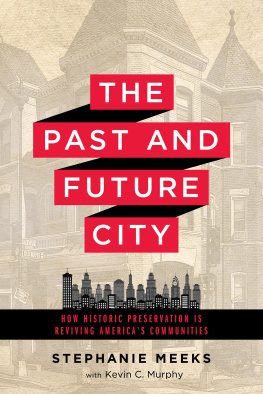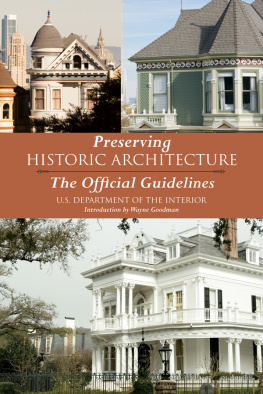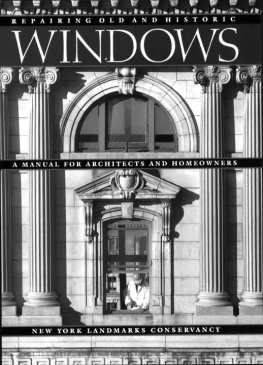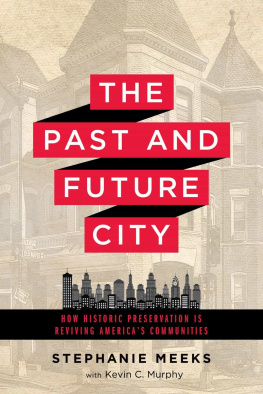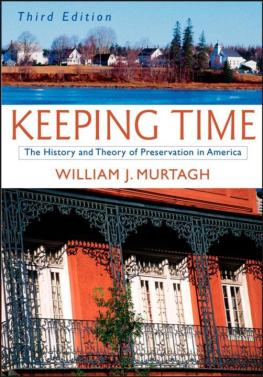
CRAFTING PRESERVATION CRITERIA
In 1966, American historic preservation was transformed by the passage of the National Historic Preservation Act, which created a National Register of Historic Places. Now comprising nearly 1.4 million historic properties across the country, the National Register is the official federal list of places in the United States thought to be worthy of preservation.
One of the fundamental principles of the National Register is that every property is evaluated according to a standard set of criteria that provide the framework for understanding why a property is significant in American history. The origins of these criteria are important because they provide a qualifying threshold for consideration by a broad range of federal preservation programs, from planning for continued adaptive use, to eligibility for grants, and inclusion in heritage tourism and educational programs.
Crafting Preservation Criteria sets out these preservation criteria for students, explaining how they got added to the equation and elucidating the test cases that paved the way for their use. From artworks to churches, from the 50-year rule to the historic scene, students will learn how places have been historically evaluated before being added to the National Register, and how the criteria have evolved over time.
John H. Sprinkle, Jr. is a Historian at the National Park Service in Washington, DC. He teaches courses on historic preservation at George Mason University, the University of Maryland, and Northern Virginia Community College.
CRAFTING PRESERVATION CRITERIA
The National Register of Historic Places and American Historic Preservation
John H. Sprinkle, Jr.
First published 2014
by Routledge
711 Third Avenue, New York, NY 10017
and by Routledge
2 Park Square, Milton Park, Abingdon, Oxon OX14 4RN
Routledge is an imprint of the Taylor & Francis Group, an informa business
2014 Taylor & Francis
The right of John H. Sprinkle, Jr. to be identified as author of this work has been asserted by him in accordance with sections 77 and 78 of the Copyright, Designs and Patents Act 1988.
All rights reserved. No part of this book may be reprinted or reproduced or utilised in any form or by any electronic, mechanical, or other means, now known or hereafter invented, including photocopying and recording, or in any information storage or retrieval system, without permission in writing from the publishers.
Trademark notice: Product or corporate names may be trademarks or registered trademarks, and are used only for identification and explanation without intent to infringe.
The views and conclusions in this book are those of the author and should not be interpreted as representing the opinions or policies of the National Park Service or the United States Government.
Library of Congress Cataloging in Publication Data
Sprinkle, John H.
Crafting preservation criteria: the National Register of Historic Places and American historic preservation / John H. Sprinkle, Jr.
pages cm
1. National Register of Historic Places. 2. Historic preservationUnited States. 3. Historic sitesConservation and restorationUnited States. 4. Historic buildingsConservation and restorationUnited States. I. Title.
E159.S696 2014
973dc23
2013045893
ISBN: 978-0-415-64255-2 (hbk)
ISBN: 978-0-415-64256-9 (pbk)
ISBN: 978-0-203-08083-2 (ebk)
Typeset in Bembo
by Book Now Ltd, London
For Escee, Harry, and Jack
CONTENTS
ACKNOWLEDGMENTS
A significant portion of the motivation for this work came over the last decade from my students at Northern Virginia Community College, George Mason University, and the University of Maryland. To them I offer my sincere thanks and some extra credit for class participation.
I must also applaud the professionalism of the many archivists and staff at the following institutions who have shared in the discovery of these findings, including: The National Trust for Historic Preservation Library at the University of Maryland; the National Gallery of Art; the Pennsylvania Art Museum; the National Archives and Records Administration; the Smithsonian Institutions National Anthropological Archives and the Archives of American Art; the Library of Congress, Manuscript Division; the National Park Service Historical Collection at the Harpers Ferry Center; the Wilson Library at the University of North Carolina at Chapel Hill; the National Academy of Sciences; the Colonial Williamsburg Foundation; the University of Mary Washington; the Ball State University, and the Advisory Council on Historic Preservation.
This book benefitted from my association with the members of the Alexandria, Virginia Historical Restoration and Preservation Commission and the Washington, DC Preservation Roundtable. While the views and conclusions in this book are mine alone and should not be interpreted as representing the opinions or policies of the National Park Service or the United States Government, over the years my appreciation for historic preservation policy has grown from numerous conversations with colleagues (current and retired) at the National Park Service. In addition, Russell V. Keune and Thomas F. King have been particularly generous with their time and insights. Moreover, I am grateful for the leadership and encouragement offered by two truly dedicated public servants, Constance W. Ramirez and Carol D. Shull.
Finally, throughout this undertaking my family has been a constant source of inspiration, comfort and understanding; not to mention Esthers many editorial contributions. As this journey ends I look forward to one very long weekend at Thornton and our next family adventure abroad.
The book rests on research conducted at the following collections and archives.
Abbreviations used in the notes are given in parentheses.
National Park Service (NPS)
The Park History Program (PHP) collection includes the working subject files of the agencys Chief Historian
Park-specific files are arranged by a four letter code:
Adams National Historical Site (ADAM)
Arlington House (ARHO)
Bents Old Fort National Historic Site (BEOL)
Castillo San Marcos National Monument (CASA)
Colonial National Historical Park (COLO)
Fort Caroline National Memorial (FOCA)
Fort Vancouver National Historic Site (FOVA)
General Grant National Memorial (GEGR)
Gloria Dei National Historic Site (GLDE)
Golden Spike National Historic Site (GOSP)
Hamilton Grange National Memorial (HAGR)
Hampton National Historic Site (HAMP)
Harpers Ferry National Historical Park (HAFE)
Independence National Historical Park (INDE)
Indiana Dunes National Lakeshore (INDU)
Saint Pauls, Eastchester National Historic Site (SAPA)
San Antonio Missions National Park (SAAN)
Touro Synagogue National Historic Site (TOSY)
Vanderbilt National Historic Site (VAMA)
The National Historic Landmarks Program maintains the working files of the former Historic Sites Survey and includes not only materials on designated National Historic Landmarks (NHL) but also extensive records on other sites considered, (OSC)properties evaluated as not meeting the criteria



